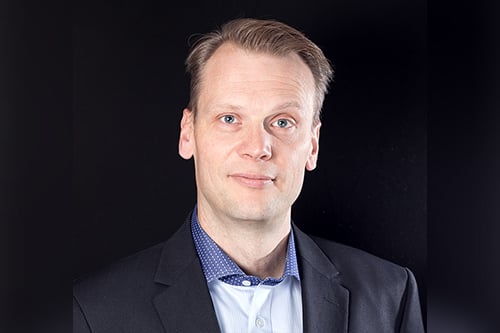

There are certain emerging risks which, even when considering the presence of the COVID-19 pandemic, remain too significant to ignore. As highlighted by Swiss Re’s most recent SONAR report, while the COVID-19 crisis has accelerated new emerging risks and trends, it must not overshadow the need for the world to transition to a low carbon future.
Read more: Insurance campaign transforms to widen plea
The launch of Puro.earth, the first scalable business model for carbon removal, is the latest push in this direction and has received early support from a variety of key players in the insurance industry as a way to reach their carbon renewal targets. The initiative has been founded and beta tested by 22 major corporations and counts Swiss Re among its first clients. Speaking with Insurance Business, co-founder of Puro.earth, Antti Vihavainen (pictured), noted that the model has been developed a middle-of-the-road solution, operating somewhere between the hard-line climate activists, who believe that economic growth is something be avoided, and the laissez-faire attitude of those corporations who believe that climate action does not matter.
“[Puro.earth] offers the possibility for individuals to cut down on emissions where they can and then remove the rest, where they can’t or won’t,” he said. “And this applies to individuals, corporations, municipalities, countries and continents… regardless of the scale, there needs to be a way [to do this] because, unfortunately, there will continue to be emissions and denying that or just saying that you must quit emitting altogether is unrealistic. It’s common knowledge that there are ways of sequestering CO2 from the atmosphere, it’s just that the business model was missing.”
Vihavainen started developing a business model and a verification system for tracking the lifecycle of the certificates issued for suppliers. With the carbon removal market expected to grow to $300 billion by 2050, the uptake of this model is not linked to the size or the sector of the businesses getting involved but instead to their “climate maturity”.
“That seems to be a common denominator of all the buyers that were active in our initial auctions,” he said. “They were companies that had had sustainability on their agenda for quite a while. So, I think that’s what we are seeing now. Obviously, Swiss Re has been at the forefront of this field since 2003, with their offset mechanism, so they’ve gone through the journey of realising that they cause emissions and that they have a carbon footprint, and they have identified ways of reducing those emissions.”
Such companies have also developed their understanding that traditional offsetting measures, such as avoiding emissions or outsourcing emission reduction to somebody else, are simply not the best ways to reduce the CO2 concentration in the atmosphere, Vihavainen said, and that something else needs to happen. He noted that companies that have climate goals such as being carbon neutral by 2025 or 2030 will keep on reducing their emissions until they reach that point. Yet when they hit that date, they will still have some emissions left and, in that last year, they will need to start buying mass quantities of removals and the process simply does not work like that.
“This is something that needs to be developed little by little,” he said. “So, therefore it’s really important to start adding carbon removal to your portfolio of actions immediately so they are part of a new sort of revenue stream that grows with the nascent carbon removal business so that, by 2025, when [businesses] need those big quantities, they actually have somewhere to buy them from.”
Looking to the insurance sector, Vihavainen highlighted that there are few business sectors where climate change poses a bigger risk to their core business than insurance where predictability is all that matters. The whole business is built on analysing risks, and, if more factors are added to the formula, it becomes more difficult for insurance businesses to understand the risk they are facing.
From his exposure with insurance companies, Vihavainen has seen that they are receptive to the message of Puro.earth and that they understand the role they must play in this movement. These companies must be very active and very visible in getting everybody on board, he said, even if just for their own businesses’ sake.
